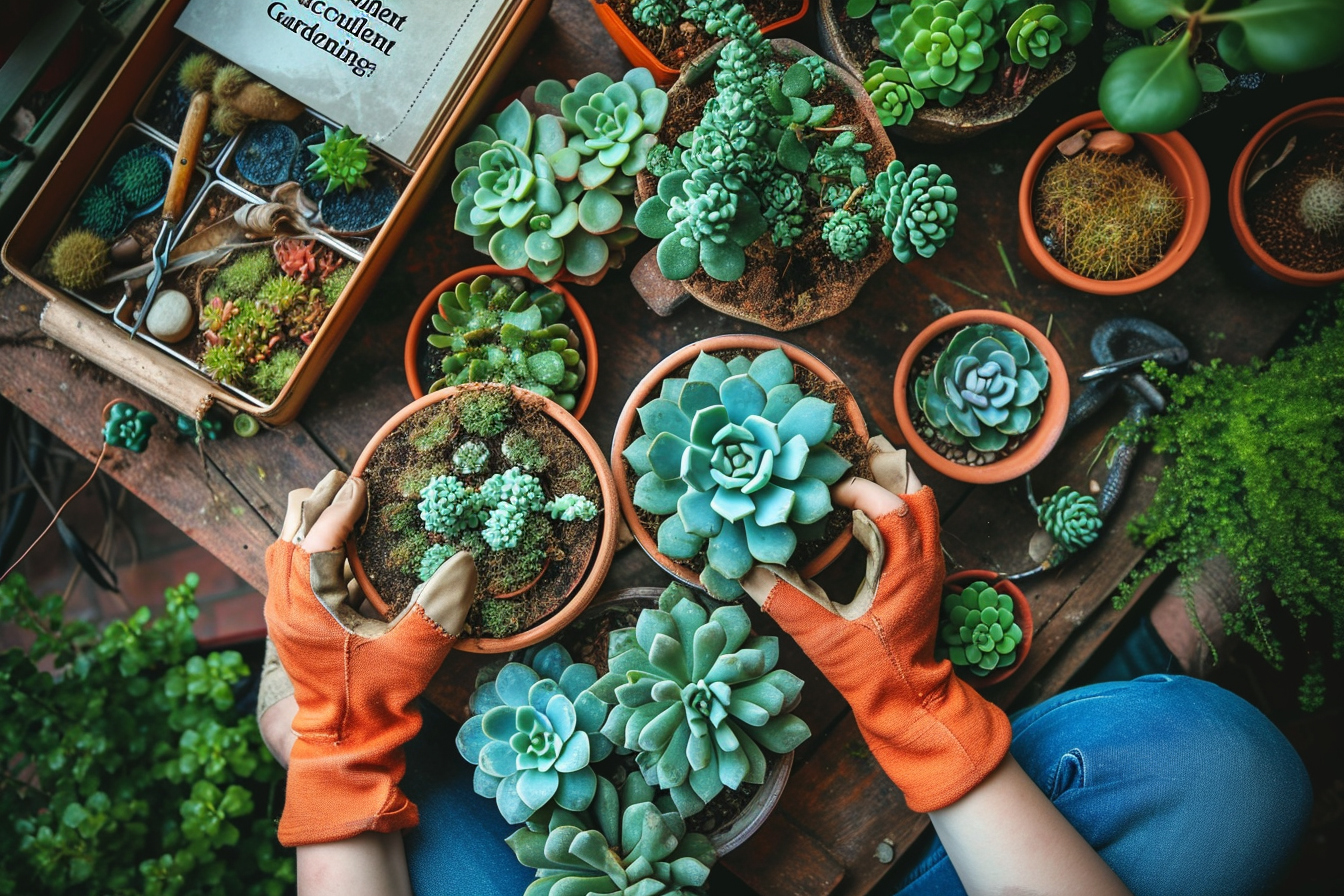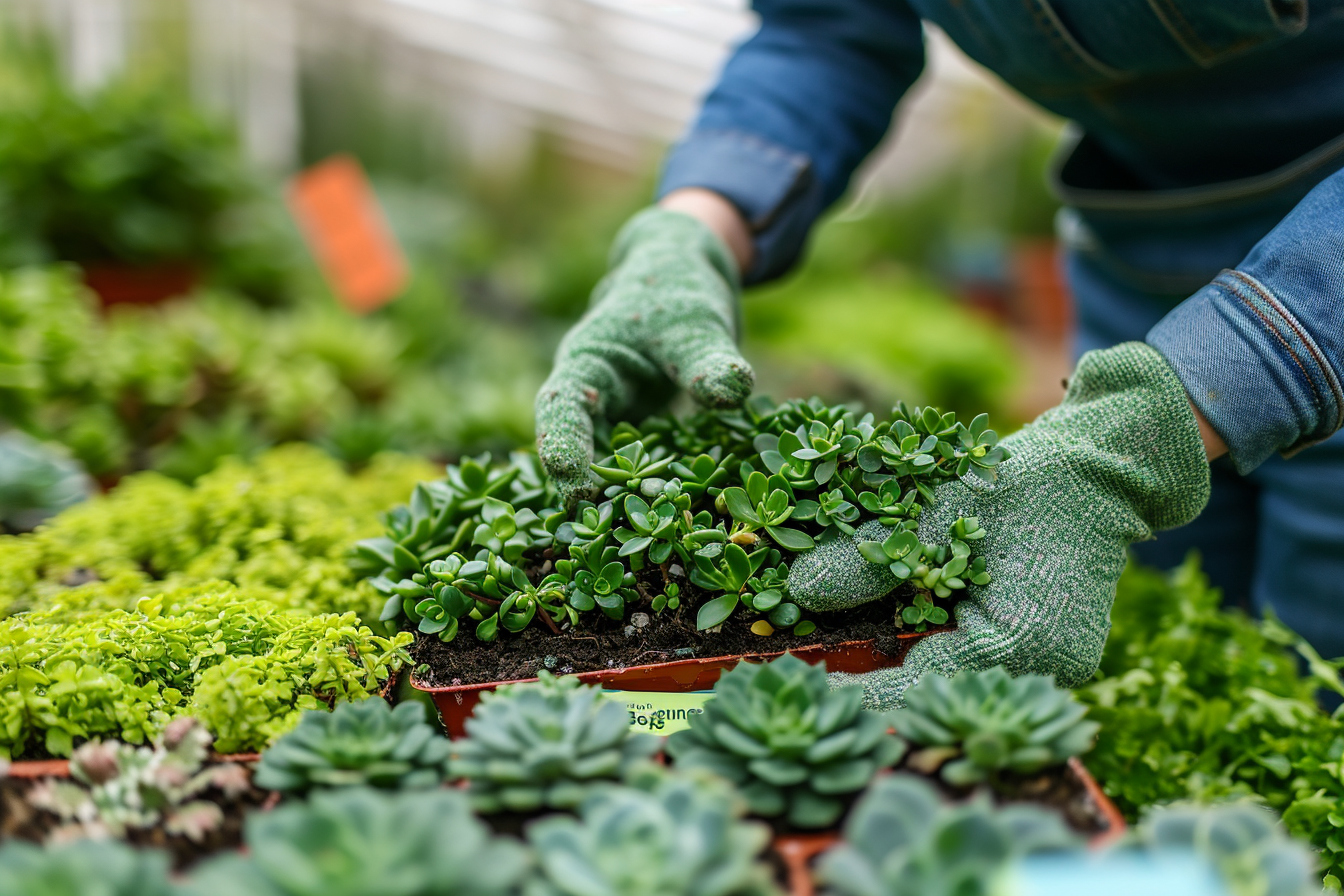Exotic succulent gardens offer an impressive diversity of shapes, colors and textures, making them attractive choices for gardening enthusiasts, whether novice or seasoned. These robust and undemanding plants allow you to enhance a space with minimalism and originality while requiring moderate maintenance.
Choosing the Right Succulents
Succulents or fatty plants are resistant and adaptable to often extreme climatic conditions. Originating from various ecosystems, they share an ability to store water in their leaves, stems or roots. Among the most popular genera, we find Aeonium, Echeveria, Sedum and even cacti, each offering a wealth of varieties.
Tip for beginners: Start with species known for their ease of cultivation, such as sempervivums (houseleeks) or sedums, which are particularly forgiving and adapt easily to different growing conditions.
For enthusiasts: Explore less common varieties and exotic hybrids that may be more finicky or require special conditions, such as Haworthia or spectacularly flowering Kalanchoe.
Garden design and layout
Planting an exotic succulent garden is a matter of creativity and understanding the environment. Succulents can be planted in the ground in regions with mild winters or in pots and containers where winters are harsher.
Location selection
Sun exposure : Succulents thrive in full sun. Choose a location with at least six hours of direct light per day. Some species tolerate partial shade, but their coloring is often less vibrant.
Protection from the elements: Although resistant, some succulents do not appreciate strong winds or heavy rain. Consider sheltering them or bringing them inside during unfavorable weather conditions.
The ideal floor
Drainage: An absolute prerequisite for succulents, well-drained soil is crucial. Commercial potting mixes suitable for cacti and succulents are often a good start. You can also create your own mix by incorporating coarse sand, perlite or pozzolan to increase drainage.
Layout and aesthetics
Harmony of colors and shapes: Combine varieties by playing on contrasts and similarities to create a harmonious landscape. Rocks and gravel can be added to add texture and relief.
Rhythm and repetition: Effective design repeats elements to lead the eye. Repeating the same variety of succulents in various locations or lining up similar pots can contribute to a cohesive visual effect.
Succulent Care
Proper care will ensure the health and beauty of your succulents. Although these plants are known for their ease of cultivation, some basic care is required.
watering
Water requirements: The mantra for watering succulents: “water abundantly, but rarely.” Succulents prefer watering that mimics their natural environment, with dry periods between waterings. Allow the substrate to dry completely before watering again.
Watering techniques: Preferably use rainwater or demineralized water to avoid salt accumulation. Water the soil directly without wetting the foliage to discourage rot and fungal diseases.
nutrition
Fertilization: The majority of succulent plants do not have a high need for fertilizer. A moderate intake at the beginning of spring and possibly in summer will be sufficient. Opt for a fertilizer low in nitrogen and balanced to avoid encouraging too rapid growth, which could weaken the plant.
Troubleshooting
Monitoring of diseases and parasites: Succulents are not immune to problems. Mealybugs, aphids or mites can attack weakened plants. Regular monitoring and the use of suitable treatments, such as natural insecticides or horticultural oils, will keep your plants healthy.
Multiplication and propagation

Succulent propagation is an exciting aspect of gardening, allowing you to multiply your favorite specimens.
cuttings
The classic method: Succulents lend themselves admirably well to cuttings, whether by leaf or stem. Let the clipping dry for a few days before placing it on a suitable substrate. With a little patience, roots and new shoots will appear.
seedling
For the more adventurous: Propagation by seed is a rewarding although more time consuming method. Seeds require a stable, moist environment to germinate. Mini greenhouses or growing trays offer the ideal conditions for a successful start.
Financial and ecological tips
In the interest of economy and respect for the environment, it is important to think sustainably.
Material recovery: Pots and containers can be collected and decorated to add a personal touch at no extra cost. Using local materials for mulching or garden decoration also reduces the ecological footprint.
Exchange between enthusiasts: Gardening communities are wonderful resources. Exchanging cuttings or tips with other hobbyists can enrich your collection and expand your knowledge without requiring large investments.
Permanent innovation: Gardening is a lifelong learning process. Experimenting with different species, arrangements or growing techniques can lead to surprising and personal discoveries. Each succulent garden is unique, a reflection of the vision and creativity of its gardener.












